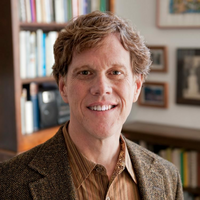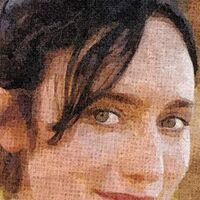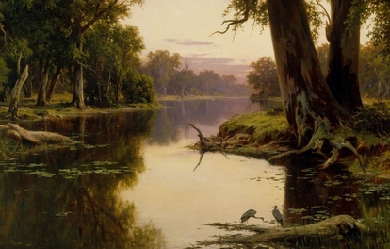
Info
Jaune-Rouge-Bleu. N ° 314
Wassily Kandinsky
1925
Bauhaus Dessau Foundation
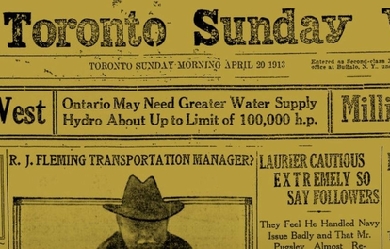
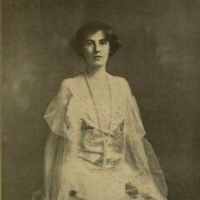
In a very real sense Miss Laura Elizabeth McCully is a Toronto writer, as, with the exception of one academic year in the United States and a few months in Ottawa, she has lived all her life in this city. She is a grand niece of the late Hon. John McCully, of Truro, Nova Scotia, one of the Fathers of Confederation; and is the daughter of Samuel Edward McCully, M.D., and Helen (Fitzgibbon) McCully. Her father is of Manx descent, and her mother is a descendant of the late James McBride of Halton county, Ontario, magistrate, who was one of the pioneers of this province, and who heroically cleared off forest and left to his heirs, one thousand acres of valuable farm lands. Miss McCully's poetry is enriched by classical illustrations, and expressed in forceful and melodious language. Her imagination relates us to the universe and to humanity. Wordsworth found new lessons in the fields and woods, and taught them; Lanier made trees, flowers and clouds our intimate friends; when we read Miss McCully's nature poems we are not conscious of the moralizing of the poet, we are in the glens ourselves looking at the afterglow, with the purity, the glory, the growth spirit and the transforming beauty of nature flowing into our lives. In a few flaming lines her stories reveal the love, the despair, and the ultimately triumphant faith of humanity. With tender pathos she unveils the evils of social and industrial conditions, and in clear tones arouses each soul, and makes it conscious of the splendour of the better conditions ahead, and thrills it with the determination to achieve for justice, freedom, and truth. – JAMES L. HUGHES, LL. D.

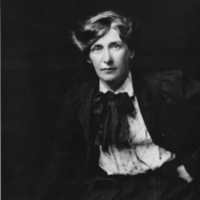
Cicely Mary Hamilton (née Hammill, 15 June 1872– 6 December 1952), was an English actress, writer, journalist, suffragist and feminist, part of the struggle for women’s suffrage in the United Kingdom. She is now best known for the play How the Vote was Won, which sees all of England’s female workers returning to their nearest male relative for financial support.. She is also credited as author of one of the most frequently performed suffrage plays, A Pageant of Great Women (1909), which first put Jane Austen on the stage as one of its “Learned Women.” Biography Cicely Mary Hammill was born in Paddington, London and educated in Malvern, Worcestershire. After a short spell in teaching she acted in a touring company. Then she wrote drama, including feminist themes, and enjoyed a period of success in the commercial theatre. In 1908 she and Bessie Hatton founded the Women Writers’ Suffrage League. This grew to around 400 members, including Ivy Compton-Burnett, Sarah Grand, Violet Hunt, Marie Belloc Lowndes, Alice Meynell, Olive Schreiner, Evelyn Sharp, May Sinclair and Margaret L. Woods. It produced campaigning literature, written by Sinclair amongst others, and recruited many prominent male supporters. Hamilton supplied the lyrics of “The March of the Women”, the song which Ethel Smyth composed in 1910 for the Women’s Social and Political Union. In the days before radio, one effective way to get a message out into society and to have it discussed was to produce short plays that could be performed around the country, and so suffrage drama was born. Elizabeth Robins’s Votes for Women and Cicely Hamilton and Christopher St. John’s How the Vote Was Won are two predominant examples of the genre. Hamilton also wrote A Pageant of Great Women, a highly successful women’s suffrage play based on the ideas of her friend, the theatre director Edith Craig. Hamilton played Woman while Craig played the painter Rosa Bonheur, one of the 50 or so great women in the play. It was produced all over the UK from 1909 until the First World War. Hamilton was a member of Craig’s theatre society, the Pioneer Players. Her play Jack and Jill and a Friend was one of the three plays in the Pioneer Players’ first production in May 1911. During World War I Hamilton initially worked in the organisation of nursing care, and then joined the army as an auxiliary. Later she formed a repertory company to entertain the troops. After the war, she wrote as a freelance journalist, particularly on birth control, and as a playwright for the Birmingham Repertory Company. In 1938 she was given a Civil List pension. Hamilton’s Theodore Savage (1922, vt. Lest Ye Die 1928) is a science-fiction novel about a Britain devastated by a war. In July 2017, the Finborough Theatre staged the first London production of Hamilton’s play 'Just to Get Married’ in over 100 years. It received positive reviews (4 stars) from The Times The Observer The Evening Standard and The New York Times The production was directed by Melissa Dunne and the cast included Tania Amsel, Nicola Blackman, Joanne Ferguson, Lauren Fitzpatrick, Jonny McPherson, Stuart Nunn, Philippa Quinn, Simon Rhodes and Joshua Riley.
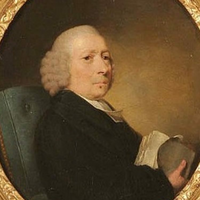
Richard Jago (1 October 1715– 8 May 1781) was an English clergyman poet and minor landscape gardener from Warwickshire. Although his writing was not highly regarded by contemporaries, some of it was sufficiently novel to have several imitators. Life Richard Jago was the third son of the Rector of Beaudesert, Warwickshire, and was named after him. His father’s family was of Cornish origin, while his mother was from the immediately adjoining village of Henley in Arden. He was educated at Solihull School, where one of its five houses is now named after him. While there he formed a lifelong friendship with William Shenstone. In 1732, he went up to University College, Oxford and while there Shenstone made him acquainted with other students with a literary taste. He took his master’s degree 9 July 1738, having entered into the church the year before, and served the curacy of Snitterfield, Warwickshire, near Stratford upon Avon. In 1744, he married Dorothea Susanna Fancourt, daughter of the rector of Kimcote in Leicestershire, whom he had known from her childhood. In 1751 his wife died, leaving him with the care of seven very young children. Three of these were boys, who predeceased him, but he was eventually survived by three of his daughters. In 1759, he married a second wife, Margaret Underwood, but had no children by her. Jago had become vicar of Harbury in 1746, and shortly after of Chesterton, both in Warwickshire. Through aristocratic patrons, he was given the living of Snitterfield in 1754, and later was presented with his former father-in-law’s living in Kimcote in 1771, after which he resigned the livings of Harbury and Chesterton, keeping the others. Snitterfield remained his favourite residence and it was there that he would die at the age of 66. Jago shared with Shenstone an interest in landscape gardening and occupied himself with making improvements to the Snitterfield vicarage garden. Both became part of the likeminded circle about Henrietta Knight, Lady Luxborough which also included other literary friends, William Somervile and Richard Graves, rector of Claverton. Shenstone dedicated a bench to Jago at the end of the viewing circuit near his house, The Leasowes, and both dedicated poems to each other. Poetry Jago’s first independent publications were two sermons. The first, “The Cause of Impenitence Considered” (1755), was published for the benefit of Harbury Free School; the second was a funeral sermon, “The nature and grounds of a Christian’s happiness in and after death” (1763). Shenstone’s letters mention an Essay on Electricity written by Jago, written in 1747, but this seems to have remained unpublished. Poems of his were also beginning to appear in Robert Dodsley’s anthologies, Collection of Poetry by several hands, among which the sentimental elegy “The Blackbirds” had made something of a stir after it first appeared in the ephemeral magazine The Adventurer in 1753. This was a lament on the death of a self-sacrificing blackbird and was shortly followed by similar poems on goldfinches and swallows. They were particularly praised by Dr. John Aikin in his “Essay on the application of Natural History to poetry”, who also noted that there were soon imitations among other minor poets, including Samuel Jackson Pratt’s “The Partridges, an elegy” (1771) and James Graeme’s “The Linnet” (1773). Jago’s most ambitious publication was the four-part topographical poem, Edge Hill, or the rural prospect delineated and moralised (1767). It was written in blank verse and was once described as “the most elaborate local poem in our language”. The poet takes his stance on the hill in the morning, facing south-west (book 1); at noon he is on Ratley Hill in the centre (books 2–3) and then moves along the ridge to look north-east at evening. The poem intermingles description with legendary, historical and antiquarian particulars, principally the battle at the start of the English Civil War. Imaginary excursions are made to Warwick, Coventry, Kenilworth, Solihull, and industrial Birmingham (under the name Bremicham), as well as many “flattering descriptions of all the great houses and seats of important people which come within his survey”. Local rivers are also included and even the nearby canal on which “sooty barks pursue their liquid track”. There are many digressions as well, including descriptions of industrial processes and of the nature of vision and the working of the telescope. The critic already quoted finds the poem “really interesting; with the scene before us, it is impossible not to admire the ingenuity and scrupulous thoroughness with which the author has performed his task,” although ultimately it is lacking in poetic execution. The Cambridge History of English and American Literature judges that "his catalogues have little picturesqueness or colour; while his verse, although it is not without the accent of local association, is typical, as a whole, of the decadence of the Miltonic method of natural description in the 18th century. Every group of trees is a grove, every country house a dome, and every hill a precipice". Particular examples of hackneyed diction include Latin-derived adjectives, as in “Honington’s irriguous meads”, or else 18th century circumlocutions such as “the woolly tribes” when sheep are meant. Nevertheless, the poem seems to have inspired the writing of the much shorter and simpler “Ode to Lansdowne Hill” (1785), which celebrates the site of another Civil War battle. In the following year Jago published “Labour and Genius, or the mill-stream and the cascade”, a humorous fable in octosyllabic verse written in memory of William Shenstone and his landscaped grounds at the Leasowes. Poems of lesser significance appeared here and there and Jago was working on a revised edition of his collected poems just before his death. This appeared posthumously as Poems, Moral and Descriptive in 1784. Included there was another homage to Milton in the oratorio “Adam, or the fatal disobedience, compiled from Milton’s Paradise Lost and adapted to music”. The rhymed choruses there were of Jago’s composition, but the main body of the work is adapted directly from Paradise Lost. Though it found no composer to set it, another of Jago’s pieces did. This was the “Roundelay for the Stratford Jubilee” organised by David Garrick in 1769, which was set for singing by Charles Dibdin. One other humorous piece also found an imitator. In Jago’s “Hamlet’s soliloquy imitated”, a minor poet agonises over whether “to print or not to print” and run the danger, by submitting his verses to Dodsley, to “lose the name of author”. A subsequent parody titled “The Presbyterian parson’s soliloquy” over the question to “conform or not conform” appeared in The Hibernian Magazine in 1774 and was often reprinted thereafter, ascribed to Samuel Badcock. One later commentator gave it as his opinion that “the hint of this parody was probably borrowed from Mr Jago’s”. Slight Jago’s output may have been, but it appears to have been influential in its time. References Wikipedia—https://en.wikipedia.org/wiki/Richard_Jago
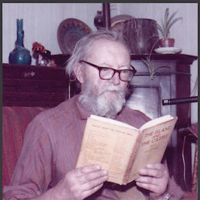
Nicholas Moore (16 November 1918 – 26 January 1986) was an English poet, associated with the New Apocalyptics in the 1940s, whose reputation stood as high as Dylan Thomas’s. He later dropped out of the literary world. Moore was born in Cambridge, England, the elder child of the philosopher G. E. Moore and Dorothy Ely. His paternal uncle was the poet, artist and critic Thomas Sturge Moore, and his brother was the composer Timothy Moore (1922-2003). He was educated at the Dragon School in Oxford, Leighton Park School in Reading, the University of St Andrews in Scotland, and Trinity College in Cambridge. Moore was editor and co-founder of a literary review, Seven (1938–40), while still an undergraduate. Seven, Magazine of People's Writing, had a complex later history: Moore edited it with John Goodland; it later appeared edited by Gordon Cruikshank, and then by Sydney D. Tremayne, after Randall Swingler bought it in 1941 from Philip O'Connor. While in Cambridge Moore became closely involved with literary London, in particular Tambimuttu. He published pamphlets under the Poetry London imprint in 1941 (of George Scurfield, G. S. Fraser, Anne Ridler and his own work). This led to Moore becoming Tambimuttu's assistant. Moore later worked for the Grey Walls Press. The Glass Tower, a selected poems collection from 1944, appeared with illustrations by the young Lucian Freud. In 1945 he edited The PL Book of Modern American Short Stories, and won Contemporary Poetry's Patron Prize (judged that year by W. H. Auden) for Girl with a Wine Glass. In 1947 he won the Harriet Monroe Memorial Prize for Girls and Birds and various other poems. Later Moore encountered difficulty in publishing; he was in the unusual position for a British poet of having a higher reputation in the USA. His association with the "romantics" of the 1940s was, in fact, rather an inaccurate reflection of his style. In the 1950s he worked as a horticulturist, writing a book The Tall Bearded Iris (1956). In 1968 he entered 31 separate pseudonymous translations of a single Baudelaire poem, in a competition for the Sunday Times, run by George Steiner. Each translation focused on a different element of the poem: rhyme, pattern, tropes, symbolism, etc. producing vastly different results, to illustrate the inadequacies and lacunae produced in translation. This work was published in 1973 as Spleen; it is also available online. Longings of the Acrobats, a selected poems volume, was edited by Peter Riley and published in 1990 by Carcanet Press. An interview with Riley concerning Moore's rediscovery and later years appears as a documentary element within the "Guilty River" chapter of Iain Sinclair's novel Downriver. According to Riley, Moore was extremely prolific and left behind many unpublished poems. An example of one of Moore's "pomenvylopes" – idiosyncratic documents consisting of poems and comments typed onto envelopes and posted to friends and acquaintances – appears online at The Fortnightly Review. His Selected Poems was published by Shoestring Press in 2014. Bibliography * A Wish in Season (1941) * The Island and the Cattle (1941) * A Book for Priscilla (1941) * Buzzing around with a Bee (1941) * The Cabaret, the Dancer, the Gentlemen (1942) * The Glass Tower (1944) * Thirty-Five Anonymous Odes (published anonymously, 1944) * The War of the Little Jersey Cows (published under the pseudonym "Guy Kelly", 1945) * The Anonymous Elegies and other poems (published anonymously, 1945) * Recollections of the Gala: Selected Poems 1943-48 (1950) * The Tall Bearded Iris (1956) * Anxious To Please (1968) (published under the pseudonym (anagram) "Romeo Anschilo", 1995 by Oasis Books) * Identity (1969) * Resolution and Identity (1970) * Spleen (1973) * Lacrimae Rerum (1988) * Longings of the Acrobats: Selected Poems (1990) * The Orange Bed (2011) References Wikipedia—http://en.wikipedia.org/wiki/Nicholas_Moore

Paula Gunn Allen (October 24, 1939 – May 29, 2008) was a Native American poet, literary critic, activist, professor, and novelist. Of mixed-race European-American, Native American, and Arab-American descent, she identified with her mother's people, the Laguna Pueblo and childhood years. She drew from its oral traditions for her fiction poetry and also wrote numerous essays on its themes. She edited four collections of Native American traditional stories and contemporary works and wrote two biographies of Native American women.
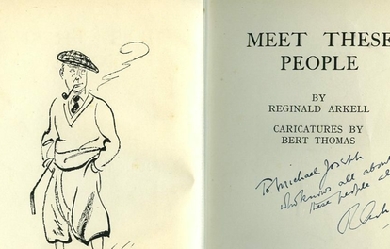
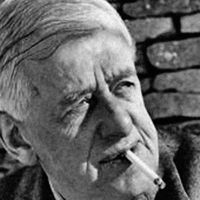
Reginald Arkell (1882–1959) was a British script writer and comic novelist who wrote many musical plays for the London theatre. The most popular of those was an adaptation of the spoof history book 1066 and All That: 1066—and all that: A Musical Comedy based on that Memorable History by Sellar and Yeatman. He was the author of A Cottage in the Country and the Green Fingers series of garden verse. Arkell was born on 14 October 1882 at Lechlade, Gloucestershire, England, was educated at Burford Grammar School and trained as a journalist. He married actress Elizabeth Evans in 1912. During the First World War he served with the King’s Own Yorkshire Light Infantry and The Norfolk Regiment. Arkell died on 1 May 1959 at Cricklade, England. Works * The Round House (1958) (novel) * Charley Moon (1953) (novel) Published by Michael Joseph Ltd. * “Trumpets Over Merriford” (1955), American title: The Miracle Of Merriford (1956) (novel) * Collected Green Fingers (1956) (poems) * Come to the ball; or, Harlequin (1951) (adaptation of Johann Strauss II’s Die Fledermaus) * Old Herbaceous (1950, republished 2002) * Green fingers Again (1942) (poems) * War Rumours (1939) (verse, illustrated by Edgar Norfield) * Percy Ponsonby (1939) (TV series) * 1066 And All That (1939) (TV version) * The Street Singer or Interval for Romance (1937) (film musical which starred Arthur Tracy) * Smash and Grab (1937) (film) * Green fingers, and other poems (1934) (includes Roses at Owlpen) * The Last Waltz (1936) (film of the musical comedy) * 1066 And All That (1935) (revue) * A Kingdom for a Cow (1935) (adaptation of Kurt Weill’s operetta Der Kuhhandel) * Playing the Games (1935) (humour) * Bridge Without Sighs (1934) (A Harmless Handbook to the game, written in rhyme) * Richard Jefferies (1933) (biography) * Winter Sportings (1929) * Meet These People (1928) - Poetry with caricatures by Bert Thomas. Published by Herbert Jenkins. * Columbine– A Fantasy of Summertime (1928) (adaptation for radio) * The Blue Train (1927) (musical, music by Robert Stolz, additional lyrics by Ivy St. Helier) * Frasquita (1925) (operetta, music by Franz Lehár) * Our Nell (1924) (musical play, music by Ivor Novello and Harold Fraser-Simson) * The tragedy of Mr. Punch (1923) (play) * Columbine (1922) (play) * Catherine (1922) (musical play, music by Tchaikovsky) * The Last Waltz (1922) (musical comedy, music by Oscar Straus) * All the Rumors (1916) (contains the poem Actual Evidence I Have None... Published by Duckworth & Company, 1916 - World War, 1914-1918 - 47 pages) * The Holidays (Children’s poem in The Captain Dec 1910) Old Herbaceous * Old Herbaceous is a classic British novel of the garden, with a title character as outsized and unforgettable as P. G. Wodehouse’s immortal manservant, Jeeves. Born at the dusk of the Victorian era, Bert Pinnegar, an awkward orphan child with one leg a tad longer than the other, rises from inauspicious schoolboy days spent picking wildflowers and dodging angry farmers to become the legendary head gardener “Old Herbaceous,” the most esteemed flower-show judge in the county and a famed horticultural wizard capable of producing dazzling April strawberries from the greenhouse and the exact morning glories his Lady spies on the French Riviera, “so blue, so blue it positively hurts.” * Sprinkled with nuggets of gardening wisdom, Old Herbaceous is a witty comic portrait of the most archetypal—and crotchety—head gardener ever to plant a row of bulbs at a British country house. External links * Works by Reginald Arkell at Faded Page (Canada) * BBC page on Percy Ponsonby * Reginald Arkell on Internet Movie Database References Wikipedia—https://en.wikipedia.org/wiki/Reginald_Arkell


Edward William Thomson was born in Toronto township, county of Peel, Ontario, February 12th, 1849. His father was William Thomson, grandson of Archibald Thomson, the first settler in Scarboro. His grandfather Edward William Thomson, was present at the taking of Detroit, and served with distinction under Brock at Queenston Heights; and was afterwards well known in Upper Canada as Col. E. W. Thomson of the Legislative Council, and as the one successful opponent of William Lyon Mackenzie in an election for the Legislature. The mother of the present E. W. Thomson was Margaret Hamilton Foley, sister of the Hon. M. H. Foley, twice Postmaster-General of the united Canadas. The future poet was educated at the Brantford Grammar School, and at the Trinity College Grammar School at Weston; but when about fourteen years of age, he was sent to an uncle and aunt in Philadelphia and given a position in a wholesale mercantile house as 'office junior.' Finding this employment very uncongenial, he enlisted in the Union army, in October, 1864, as a trooper in the 3rd Pennsylvania Cavalry. This corps was engaged twice at Hatcher's Run, and was with Grant when he took Petersburgh. Discharged in August, 1865, he returned to the parental home at Chippewa, Ontario. In June, 1866, when the Fenians raided Upper Canada, young Thomson promptly enlisted in the Queen's Own, and was in action at the Ridgeway fight. The following year he entered the profession of Civil Engineering, and in 1872 was registered a Provincial Land Surveyor. He practised his profession until December, 1878, when at the invitation of the Hon. George Brown, he joined the staff of The Globe, Toronto, as an editorial writer. Four years later the Manitoba boom attracted him, and he practised surveying for two or three years in Winnipeg. In 1885, he rejoined The Globe staff, but retired again in 1891, because of his opposition to the Liberal policy of Unrestricted Reciprocity. Shortly afterwards he was invited to join the staff of the Youth's Companion. He accepted and remained for eleven years. Since 1903, he has lived in Ottawa, employed as a newspaper correspondent and engaged in literary work.The Many-Mansioned House and Other Poems was issued in 1909. His poems, like his short stories, are lucid, vital, original. References http://digital.library.upenn.edu/women/garvin/poets/thomson.html

Denis Florence MacCarthy (1817–1882) was an Irish poet, translator, and biographer, born in Lower O’Connell Street, Dublin. Life MacCarthy was born in Lower O’Connell Street, Dublin, on 26 May 1817, and educated there and at St Patrick’s College, Maynooth. He acquired an intimate knowledge of Spanish from a learned priest, who had spent much time in Spain, which he was later to turn to good advantage. In April 1834, before turning seventeen, MacCarthy contributed his first verses to the Dublin Satirist. He was one of a coterie of writers whose works appeared in the Nation, which had been started by Charles Gavan Duffy in 1842. Writing under the pseudonym “Desmond”, most of MacCarthy’s patriotic verse appeared in this organ. In 1846 he was called to the Irish bar, but never practised. In the same year he edited The Poets and Dramatists of Ireland, which he prefaced with an essay on the early history and religion of his countrymen. About this time he also edited The Book of Irish Ballads (by various authors), with an introductory essay on ballad poetry in general. His Ballads, Poems, and Lyrics, appeared in 1850, original and translated. His attention was first directed to Pedro Calderón de la Barca by a passage in one of Percy Bysshe Shelley’s essays, and from then on the interpretation of the “Spanish Shakespeare” claimed the greater part of his attention. The first volume of his translations, containing six plays, appeared in 1853, and was followed by further instalments in 1861, 1867, 1870, and 1873. His version of Daybreak in Capacabana was completed only a few months before his death. Until 1864 he resided principally on Killiney Hill, overlooking Dublin Bay. The delicate health of some members of his family then rendered a change of climate imperative, and he paid a prolonged visit to continental Europe. On his return MacCarthy settled in London, where he published– in addition to his translations– Shelley’s Early Life, which contains an account of that poet’s visit to Dublin in 1812. MacCarthy had already resettled in his native land of Ireland for some months, when he died on Good Friday, 1882 at Blackrock, Dublin. His poetical gifts were inherited by his daughter, who became a nun, and wrote as Sister Mary Stanislaus. His poems are distinguished by a sense of harmony and sympathy with natural beauty. Such poems as “The Bridal of the Year,” “Summer Longings” (alias “Waiting for the May”), and his long narrative poem, “The Voyage of St. Brendan,” are among his most enduring works. The last-mentioned, which paraphrases the “Ave Maria Stella” as the evening song of the sailors, is also marked by the earnest religious feeling which marked its author throughout life. But it is by his version of Calderon that he is considered to have won a permanent place in English letters. His success is sufficiently testified by George Ticknor, who declared in his History of Spanish Literature that MacCarthy "has succeeded in giving a faithful idea of what is grandest and most effective in [Calderon’s] genius... to a degree which I had previously thought impossible. Nothing, I think, in the English language will give us so true an impression of what is most characteristic of the Spanish drama, and of Spanish poetry generally.” Published works Below are lists of his published works, some of which are available on-line at Project Gutenberg (see Online works below). Poetry Poems Published in Dublin by M. H. Gill and Son in 1882 An extensive collection edited by the poet’s son. The Book of Irish Ballads Published in Dublin by James Duffy in 1846, revised in 1869. Ballads, Poems, and Lyrics, Original and Translated Published in Dublin by James McGlashan in 1850. The Bell-Founder, And Other Poems Published in London by David Bogue in 1857. Underglimpses, And Other Poems Published in London by David Bogue in 1857. Irish Legends And Lyrics Published in Dublin by McGlashan & Gill in 1858. Poems of Denis F. McCarthy [sic], with Life and Notes Published in Dublin and Cork by The Educational Company, Ltd., no date. Drama Dramas of Calderon, Tragic, Comic, and Legendary Published in London by Charles Dolman in 1853. Containing “The Constant Prince” ("El Principe Constante"), “The Secret in Words” ("El Secreto a Voces"), “The Physician of His own Honour” ("El Medico de Su Honra"), “Love after Death” ("Amar despues de la Muerte"), “The Purgatory of Saint Patrick” ("El Purgatorio de San Patricio"), and “The Scarf and the Flower” ("La Banda y la Flor"). Rebound with a foreword in 1886 for the Memorial Fund Committee. Love the Greatest Enchantment: The Sorceries of Sin: The Devotion of the Cross Published in London by Longtan, Green, Longman and Roberts in 1861. Containing (with original language texts) “El Mayor Encanto Amor, Los Encantos de la Culpa” (an “Auto Sacramental”), and “La Devocion de la Cruz.” Mysteries of Corpus Christi Published in Dublin by James Duffy in 1867. Containing “Balshazza’s Feast” ("La Cena de Balthasar") and “The Divine Philothea” ("La Divina Filotea"), two “Auto Sacramentales.” The Two Lovers of Heaven: Chrysanthus and Daria Published in Dublin by John F. Fowler in 1870. Containing Los dos amantes del cielo: Crisanto y Daria. Calderon’s Dramas Published in London by Henry S. King in 1873. Containing “Life is a Dream” ("La Vida es Sueño"), “The Wonder-Working Magician” ("El Magico Prodigioso"), and a new edition of “The Purgatory of St. Patrick” ("Purgatorio de San Patricio"). Daybreak at Capacabana (La Aurora en Copacabana) was completed shortly before the translator’s death. Biography The Poets and Dramatists of Ireland Published in Dublin by James Duffy in 1846. Shelley’s Early Life Published in London by John Camden Hotten in 1872. References Wikipedia—https://en.wikipedia.org/wiki/Denis_Florence_MacCarthy
The author was born in México City, in 1964; He graduated from the Universidad Nacional Autónoma de México as an Orthopaedic Surgeon. His passions are, his children: Nadezda, Bruno, and his mother: Inés, to who he dedicates most of his time. About his affections: anthropology, world's history, science fiction, to enjoy a nice and spicy meal with a fine cigar, rock music... The Beatles!, gardening, to take a long afternoon walking and sports. His heroes are John Winston Ono Lennon, Vincent Van Gogh... And James Tiberius Kirk. “Life is too short to live with fear about feelings... I wish I could turn back time, to let know those who have left us, that in my life... I loved them.”

Grew up on a little gem in the Caribbean, a tourist attraction the eyes never misses. There I had my education, primary through college. Life has always been a challenge but with God I keep climbing, and my dreams are slowing becoming. Writer, teacher, website owner of https://www.livingtoreachacme.com/ and more. Always loved poetry. I dreamed of poetry, tried but never thought I was good enough. Today, I am here, I stand only by the Grace of God. He is just so awesome!!!!

My name is Kamu, but names only stay important in the physical world. I am a writer, a poet, a photographer, and an artist. I am a person in this world, that just wants to contribute to all the creative energy in this world. Hoping that my poems will inspire and positively affect people, to let them wander into the deeper side of their life, to pull out the words from their thoughts, and creatively place them into reality. In my journey through life, I am constantly being awakened into someone else's imagination, and I share my thoughts and reflect upon theirs, being inspired to write from ideas that we have all put out together, sharing the images and emotions that come from our complex human minds. To me, questions are the most important thing of all. The art of questioning all and having theories and trying to fill out the unknown seems to be one of my greatest fascinations. I love thinking about things that stay a mystery in this world. It is what inspires me to write. Writing is a way for me to express in a way that is unavailable in any other form of art, or on a greater scale, life. I hope you enjoy what I am trying to express, and I hope to be inspired by your creativity as well. Thank you.

Stay at home Mom and Gram. Trying to accomplish Something More Than Nothing! On a mission to be more... Leaving my mark upon this earth in indelible ink! Singer/ Songwriter, Musician Blogger... I have a Blog on Google Blogger and on WordPress Please follow me on YouTube and on SoundCloud!!!

Hello ladies and gents I am a 32 year old black Lesbian and proud of it. I am a writer been writing sense 14 and been working on my poetry book called the lesbian life Soon will be comings out. I love thick, voluptuous , big beautiful women Know i love women only not here because i am desperat u am here to share my work. And also here to read and enjoy other poets work or musician s. I love both. I write inspirational poetry, love, erotica, children, Life poetry, anything about life the reality of it. Spiritual etc. I love God i am a Christian Lesbian God understand my life style not here to Judge, to compete I am here to relax share poetry, verse, expressions and live my life.
a mature lady of 57 that is enjoying time to do what she really loves. I love to paint, to grow roses, and to write. I adore my two grand daughters, and my children. The time is short, and every day I get to be here is a blessing. The god of love and righteousness is my hope. Worked as an RN for many years, interested in healing physical and spiritual. Hope to finish a manuscript soon and get it published.

Mensur Gjonbalaj is a born and raised New Yorker of Albanian descent. A poet and aspiring novelist, Mensur is currently working on two novel projects and a book poetry that he plans to have published and released by Fall/Winter of 2013. It’s important to know that though the writer’s name is Mensur, he goes by the name Mera as well. Mera is a nickname he’s had since he was a child and has a book of poetry titled Poetics by Mera. Almost all of the poems he posts onto this blog are taken out of his poetry book. The book contains over 500 poems written by Mensur over the last two to three years. Mensur’s works are quite diverse, though he does like to write frequently about love, romance, and his past relationships. Aside from that he also tries to produce more spiritual and emotionally-driven pieces of writing that tend to have some correlation to his life experiences. You could check out his poetry blog Poetics by Mera at merapoetics.wordpress.com
I'm a twin girl known as Lethabo I'm kind and a caring person I don't mind helping a helpless kid writing is in my blood and it's my life it is also my passion my novel are written from experience and I'm sharing it with the world so every situation they come across like mine they should never give up but hold on tight fight for what you want I speak English language


